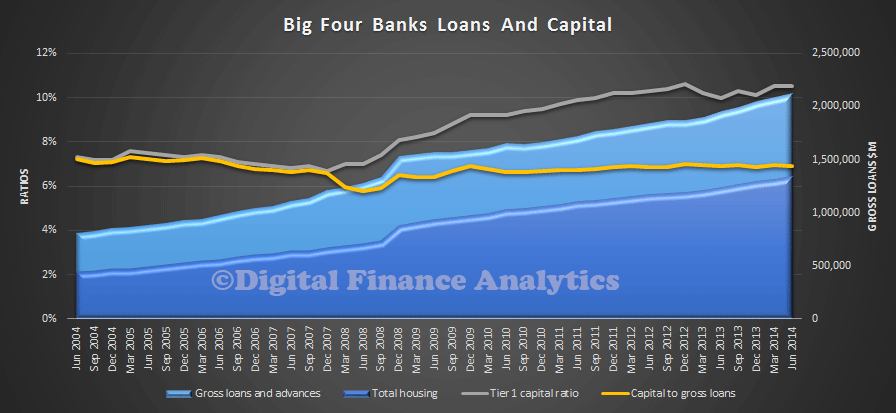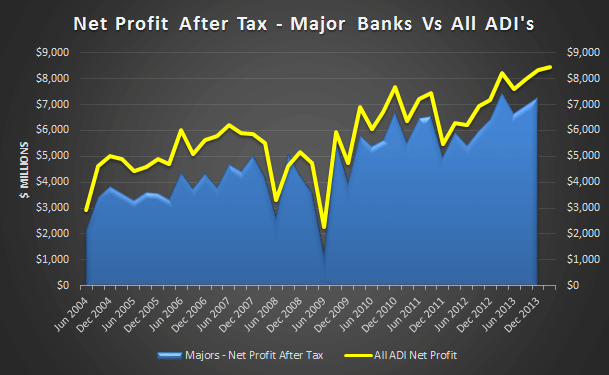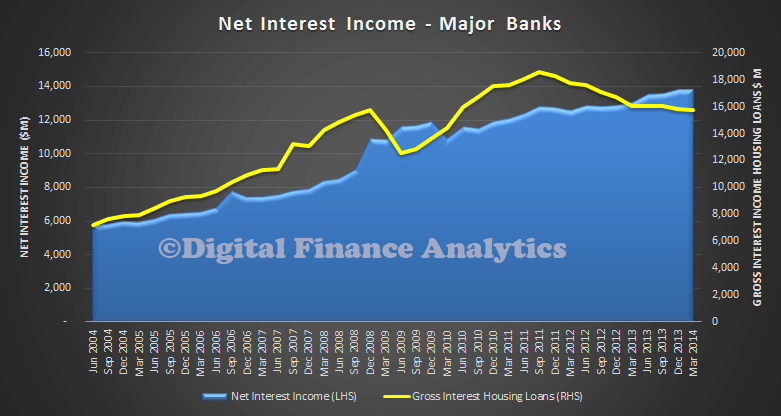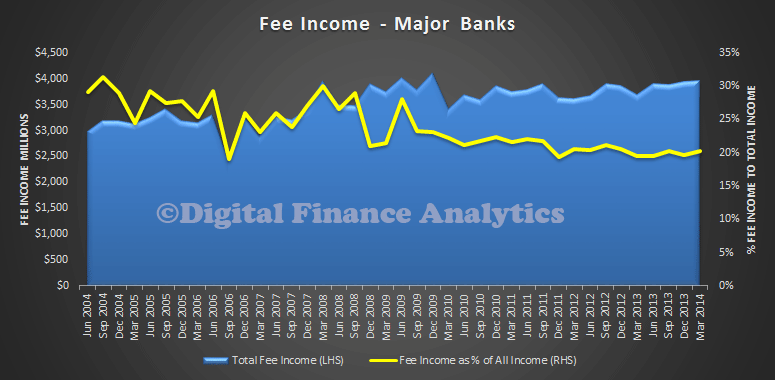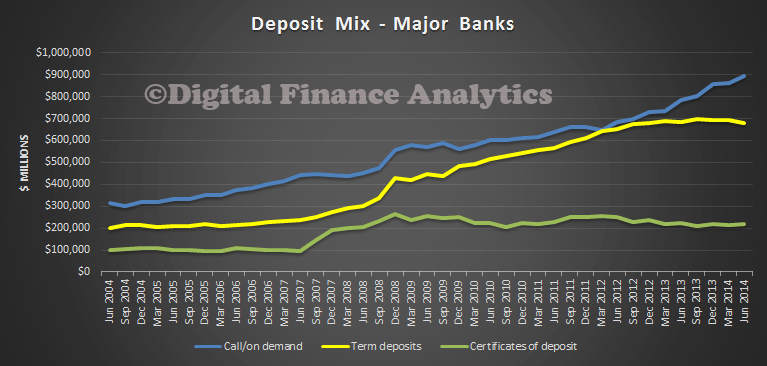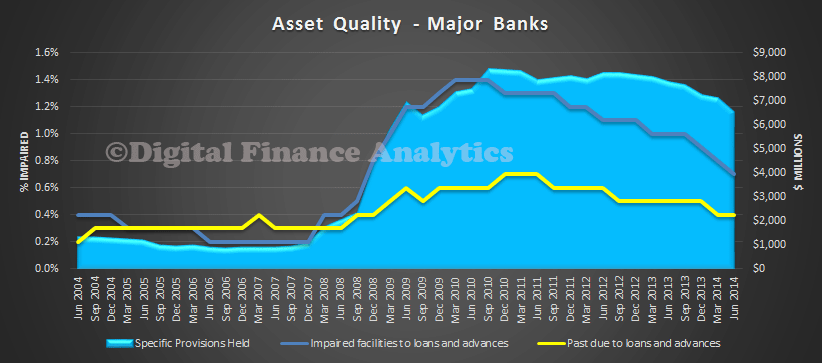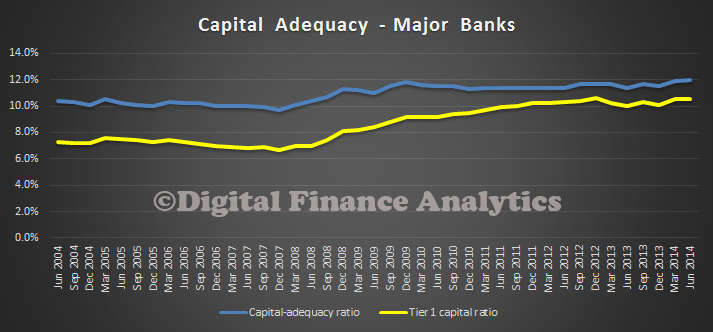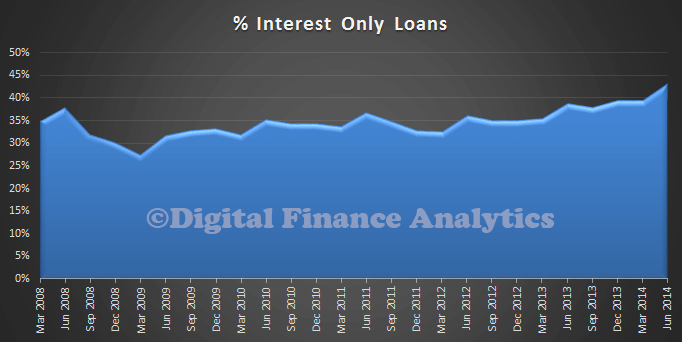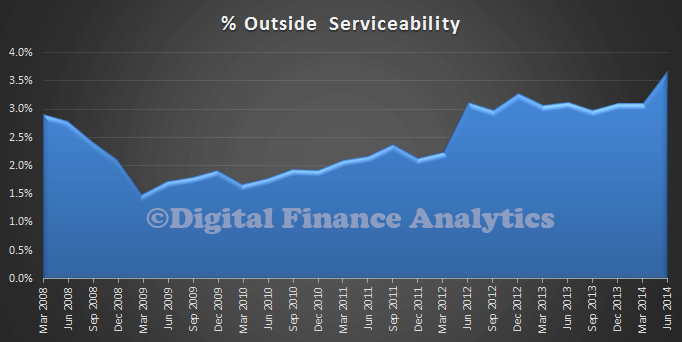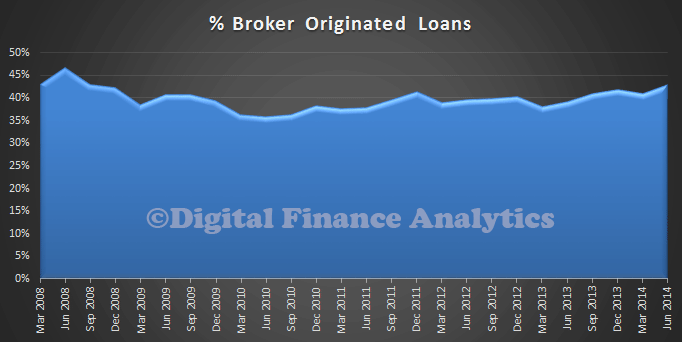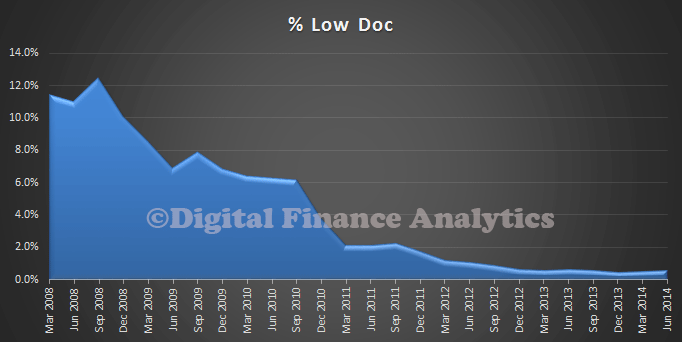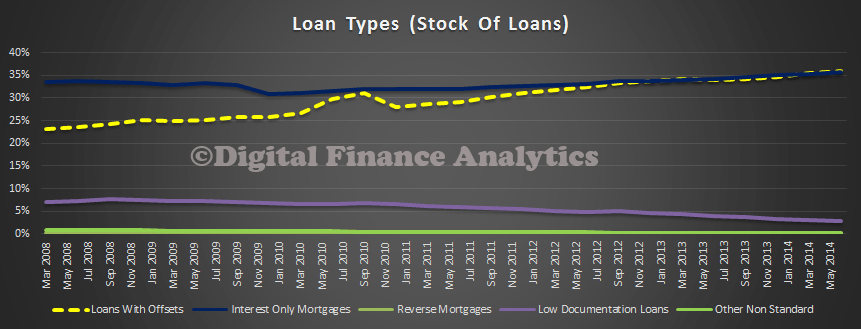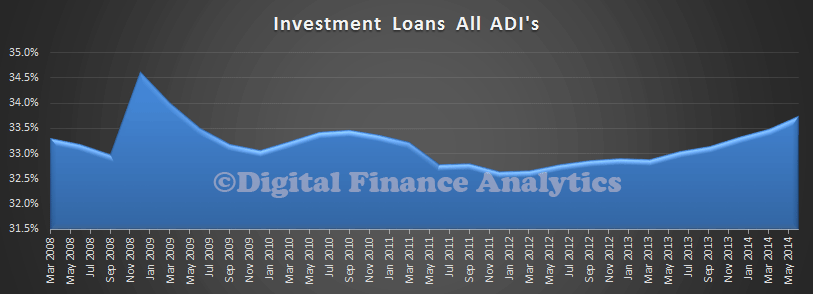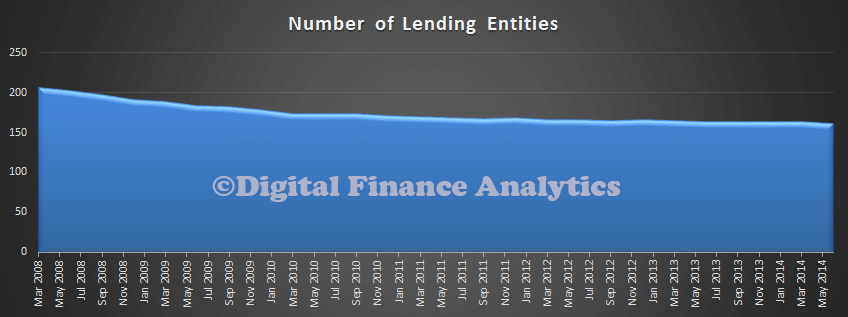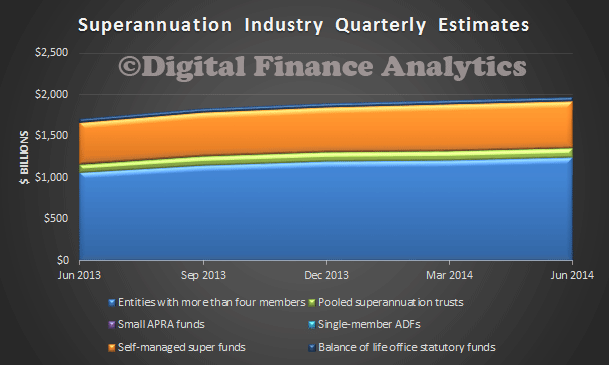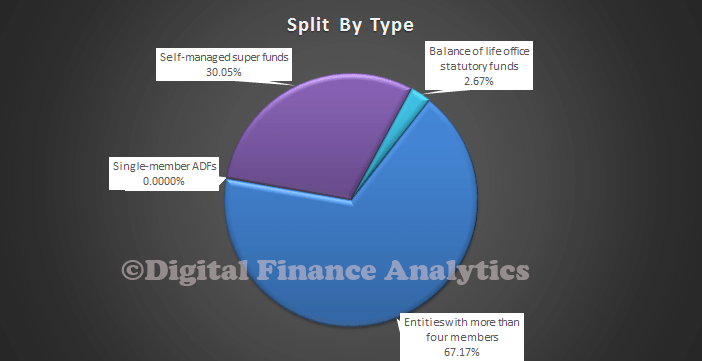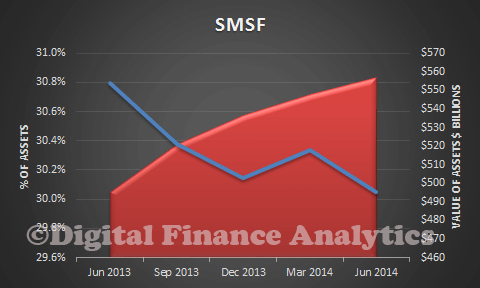In an important speech given today by Wayne Byres, Chairman of APRA, “Perspectives on the Global Regulatory Agenda”, there are some important pointers which indicate to me that we should expect some changes to the capital regulatory framework quite soon. We highlighted the capital questions recently.
Whilst talking about the global agenda, he did confirm the FSI Inquiry view that local and global cannot be separated. Whilst Basel III was focusing on systemically important banks, the current agenda is to minimise the impact of bank failure. He comments that the role of internal models now being used by the large banks to calculate capital requirements is being questioned. “The Chairman of the Basel Committee has made it clear that there is a problem, and something must be done about it”. APRA recently indicated that the route would likley be an increase in the risk weightings.
Next he discussed the need to bolster the ability of banks to handle losses should they arise.
Finally, he also highlighted concerns about bank culture, and the incentives which drive behaviour within these organisations.
These are important issues, and as we showed, the major Australian banks now hold less capital to assets than they did before the GFC, and before Basel II and III were implemented. This is a concern.
Well, we would expect banks using the advance internal methods of capital calculation will be required to hold more capital than they do today. This will reduce their ability to lend, and raise the costs of loans to borrowers. Second, we would expect the concept of creating additional categories of capital using subordinated instruments to be blocked (many of the banks have been calling for this, as it would reduce their capital costs further). Finally, we we expect lending standards to be examined, and especially serviceability, or loan to income criteria be established.
Whether this will be triggered by the findings from FSI, or directly by APRA is an open question. But it looks to me as if capital just got more expensive for the large players. Some would say, better late then never!
But strangest of all is the apparent disconnect between the RBA minutes today which highlighted the banks strong capital position, and the APRA discussions. They cannot both be right.

